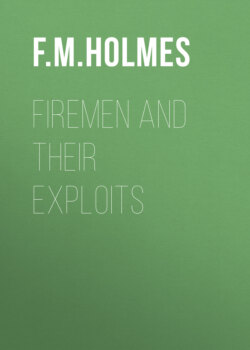Читать книгу Firemen and Their Exploits - F. M. Holmes - Страница 4
На сайте Литреса книга снята с продажи.
PREFACE.
ОглавлениеTable of Contents
The present volume, though complete in itself, forms one of a series seeking to describe in a popular and non-technical manner the Triumphs of Engineers. The same style has, therefore, been followed which was adopted in the preceding volumes. The profession of Engineering has exercised great influence on the work of Fire Extinguishment, as on some other things; and the subject is, therefore, not inappropriate to the series of books of which the volume forms part.
The story of the Fire-Engine begins in Egypt about a hundred and fifty years before Christ. Hero of Alexandria describes a contrivance called the "siphon used in conflagrations," and some persons are of opinion that he was not unacquainted with the use of the air-chest. But it was not until nearly two thousand years later—that is, about the close of the seventeenth century—that the air-chamber and the hose seem to have been brought into anything like general use,—if, indeed, the use can be called general even then.
Much of the story is involved in obscurity, or it may be there was little story to tell; but by the year 1726, Newsham had constructed satisfactory fire-engines in London; and Braithwaite the engineer—who with Ericsson constructed the "Novelty" to compete with Stephenson's "Rocket" at the locomotive contest at Rainhill in 1829—built a steam fire-engine about 1830, though it was not until thirty years, or more, later that the use of the machine became general.
As to Fire-Brigades, the Insurance Companies, which began to appear after the Great Fire of 1666, were wont to employ separate staffs of men to extinguish fires; but by the year 1833, the more important had united, and the London Fire-Brigade had been formed under the control of Mr. James Braidwood. Many provincial towns followed the metropolitan model in forming their brigades.
Together with the development of the Fire-Engine and of efficient brigades has been the introduction of various other appliances, such as Fire-Escapes, Chemical Extinctors, Water-Towers, and the great improvement in the water supply. Nothing is more striking in the history of conflagrations than the comparison between the dry state of the New River pipes at the Great Fire of 1666 and the copious flood of five million gallons poured into the city in a few hours by the same company to quench the great Cripplegate fire of November, 1897.
But, indeed, the whole realm of Fire Extinguishment is a world of constant improvement and strain after perfection. To describe something of these efforts, and trace out the main features of their story, is the object of the present volume.
